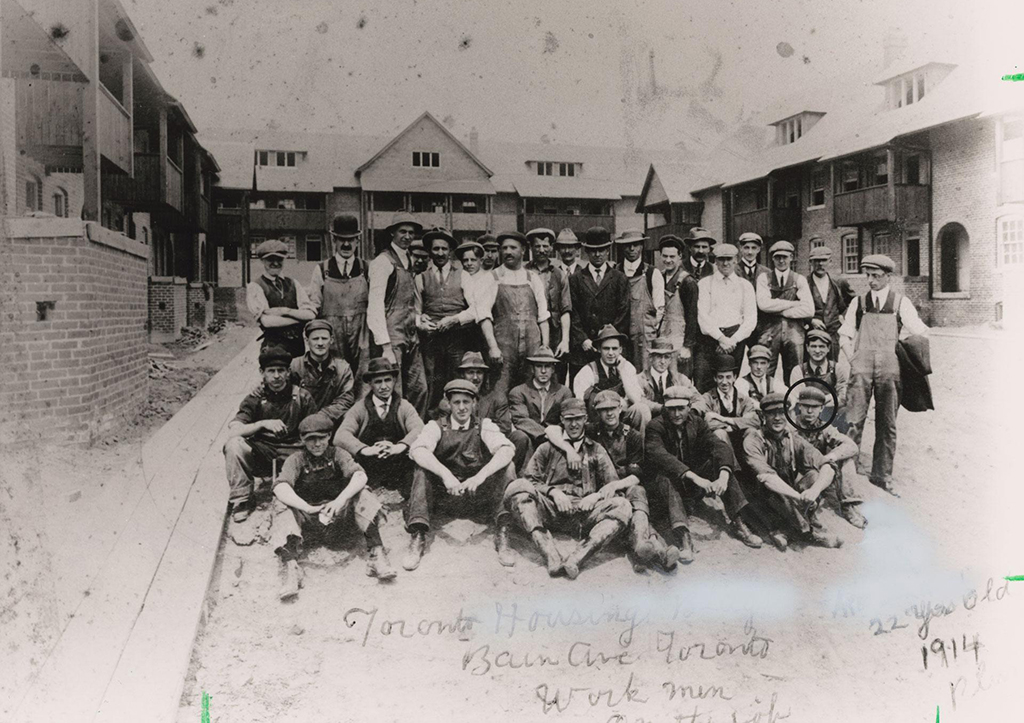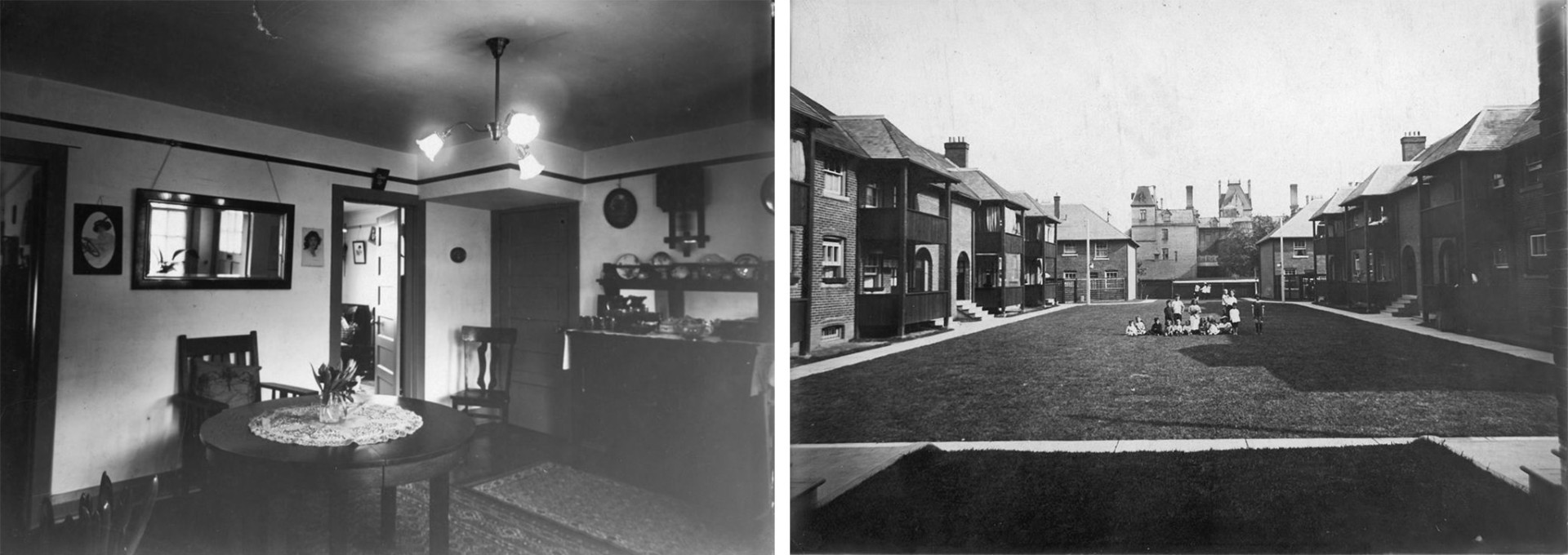Location: Toronto, Ontario
Completed: 1914, 1923
Architect: Eden Smith and Sons (1913), F. H. Marani (1923)
Nominated by: Peter Tabuns, MPP (Toronto—Danforth)
Few places better capture both the opportunities and challenges of affordable housing in Toronto than the Bain Co-Op, a thoughtfully designed collection of buildings and landscapes that through their 100-year history have evolved from one of Canada’s first social housing projects into a thriving cooperative community.
A Story of Firsts
First opened as Riverdale Courts in 1914, the Bain Co-Op is considered among Canada’s first social housing projects. Developed by the Toronto Housing Authority (TCH), a public-private partnership dedicated to building affordable housing options for low-wage earners, it was a direct response to the overcrowded and unsanitary conditions that plagued much of Toronto’s industrial era working-class housing.
Totalling 260 apartments by 1923, the complex included buildings by both Eden Smith and Sons and F.H. Marani, leading architects of their time. Each of the apartments featured a private entrance, then a rarity in urban housing, along with access to shared green spaces that fostered a sense of community among residents. The entire complex was designed to be both sturdy and beautiful—recognizing that the quality of housing was important for families and individuals to thrive. Techniques were developed to maintain quality while reducing costs, including manufacturing interior finishes that could be used across different projects.
 Workmen pose for a group photo in front of the newly completed project. Image courtesy of Toronto Star Archives.
Workmen pose for a group photo in front of the newly completed project. Image courtesy of Toronto Star Archives.
Unfortunately, the economic woes of the 1930s would deeply affect TCH, and Riverdale Courts would eventually move to private ownership. By the 1970s, the complex now known as the Bain Apartments had fallen into disrepair. Roofs were leaking, sidewalks were cracked, and the property was in desperate need of renovation. When the private landlord announced plans to convert the apartments into condominiums, the tenants, many of whom had lived there for decades, faced the prospect of losing their homes.
In response, the residents came together to form the Bain Apartment Tenants Association, driven by a mix of long-time working-class residents and a younger generation of social activists who were deeply committed to social justice and affordable housing. With the support of local politicians, including then Toronto Ward Alderman John Sewell, and the Canada Mortgage and Housing Corporation (CMHC), the tenants successfully negotiated the purchase of the property. On October 30, 1977, the Bain Apartments Co-Operative Inc. was officially formed, making it one of the first housing cooperatives in Ontario.
The transition to cooperative ownership was not without challenges—the tenants had to quickly learn how to manage and maintain a large housing complex, including the daunting task of overseeing extensive renovations. However, the cooperative model proved resilient, and allowed residents to create a vibrant, member-managed community that has persisted through the decades.

Left: Typical dining room. Right: One of the courtyards in the housing complex. Images courtesy of City of Toronto Archives.
The Garden City
The design of Riverdale Courts was deeply influenced by England’s Garden City Movement, which sought to bring together the best qualities of city and country living in response to the overcrowded and unsanitary conditions brought about by the Industrial Revolution. Integration of green space into the built fabric was a key characteristic of this movement.
Riverdale Courts features 25 three-storey buildings, as well as two small double houses, arranged over two large city blocks. The buildings are arranged into a cross-axial layout around lush green courtyards, a hallmark of Garden City ideals. These courtyards, planted with mature trees and gardens, provide a shared, tranquil space for residents, offering a stark contrast to the cramped and haphazard housing that dominated much of the city at the time. The buildings themselves were designed in the
Arts and Craft style, itself a response to industrialization. The style emphasized a return to traditional construction techniques, emphasizing craftsmanship and simple, functional beauty.
Today, the Bain Co-Op stands as a model of sustainable urban living. The original design, with its emphasis on green space and community, has been preserved and enhanced over the years. The courtyards, which were once fenced off and underutilized, are now bustling with life, serving as communal gathering spaces, children’s play areas, and gardens. These spaces not only provide residents with a connection to nature but also play a crucial role in fostering social interaction and a sense of belonging—enough so to be the subject of study today.
Bain Co-Op’s story is one of resilience, adaptation, and the enduring power of community. As Toronto’s housing market becomes increasingly competitive, Bain Co-Op continues to stand as an example of what can be achieved when people come together with a shared vision, demonstrating the century-long success of collective effort and commitment to shared values.
This post is part of the OAA’s Queen’s Park Picks 2024 series, where Ontario’s Members of Provincial Parliament (MPPs) were encouraged to nominate a building in their riding for a chance to learn more about it. This year, MPPs were asked to consider various typologies related to housing when making their suggestion, tying into the 2024 OAA Conference theme, Housing: Pushing the Envelope. Check out the rest of the series to learn more about great buildings across the province.